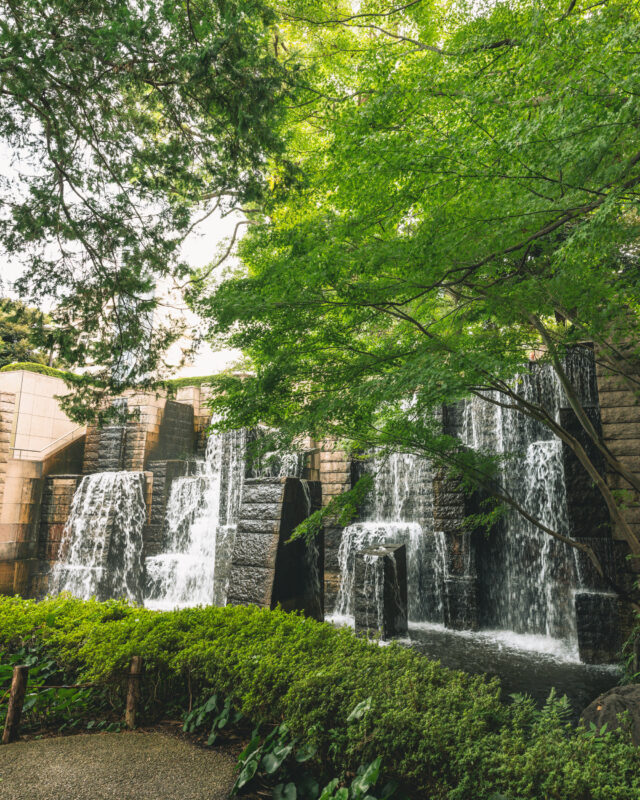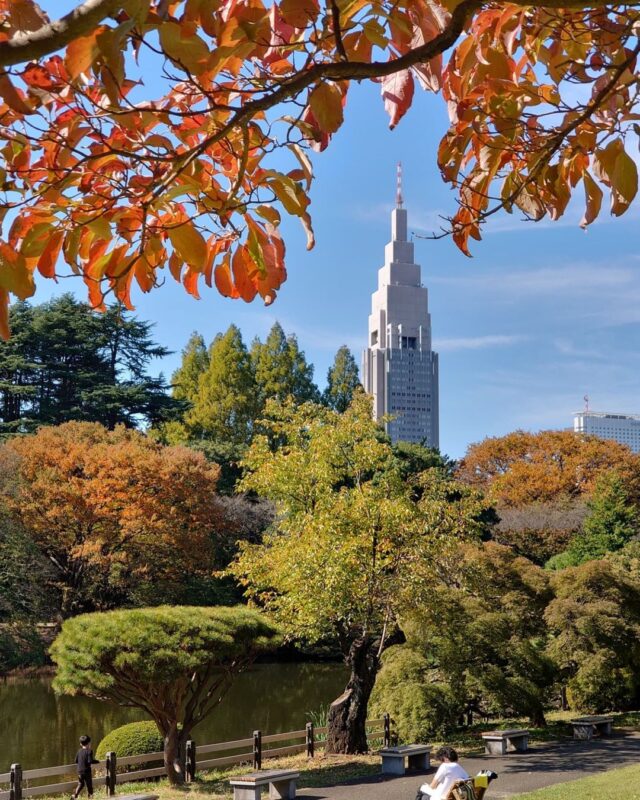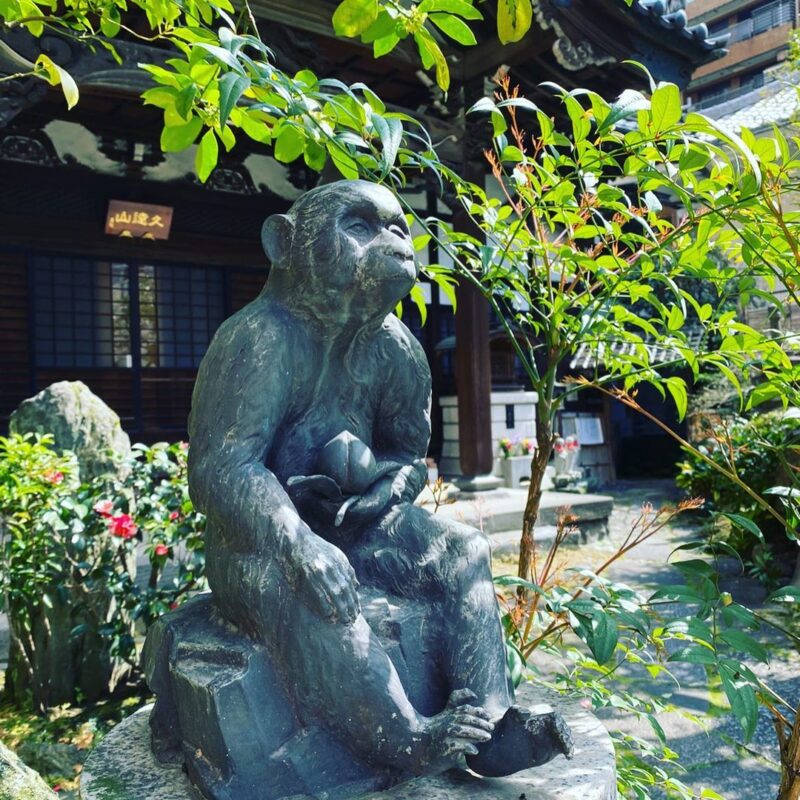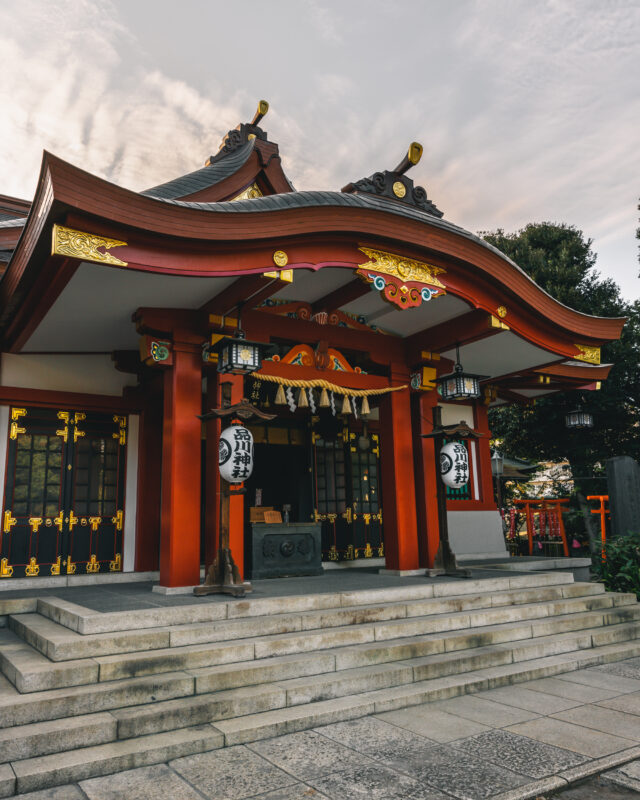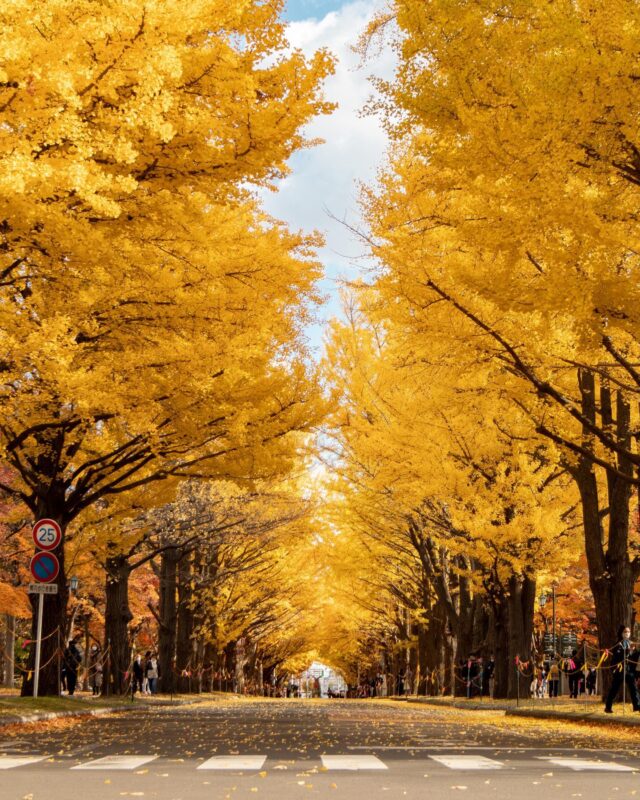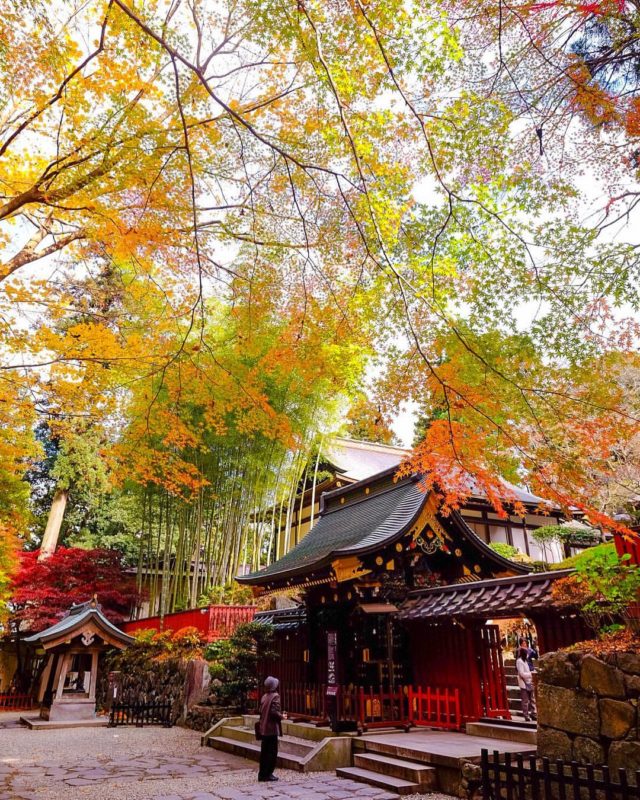Tokyo Itinerary in Autumn: 3 best historical spots to see autumn leaves in Shinagawa & Meguro
In Tokyo, the fall breeze started to blow at night. Speaking of fall, we can not miss seeing autumn leaves. This time, we looked for hidden spots with stunning views in the areas surrounding Hotel Gracery Tamachi on Instagram and selected 3 recommendations by focusing on how beautiful, how large and history. All of them are located near Shinagawa Station or Meguro Station on the Yamanote line, so you can stop by there while going for a meal or shopping. The best time to see autumn leaves is from late November to late December every year.
“Gotenyama Garden” that was popular among Samurai and Ukiyo-e painters having led Japan about 400 years ago

“Gotenyama Garden (御殿山庭園)” was used to be a place where Japan’s generals took a break on the way to going falconry or tea ceremonies were held between the 1600s and the 1800s. From that time, it was famous for cherry blossoms in spring and autumn leaves in fall, and Ukiyo-e (woodblock print) painters, leading Japan such as Hokusai Katsushika and Hiroshige Utagawa, drew this spot in their artworks. Even today, elegant autumn scenery created by red maple and yellow ginkgo continues to fascinate lots of visitors. The pond, where duck family comes to play in the water on a sunny day, becomes a water mirror and produces a fantastic view. In addition, there are other highlights including the dynamic artificial waterfall making you feel refreshed and ‘Ujian (有時庵)’ which is a retro and modern tea room.
| Opening Hours | 10:00AM – 7:00PM |
| Address | 4-7-35 Kitashinagawa, Shinagawa-ku, Tokyo Prefecture |
| Access | A 10-minute walk from Shinagawa Station Hotel Gracery Tamachi: 2 station away from Tamachi Station on the Yamanote line Hotel Tavinos Hamamatsucho: 3 station away from Tamachi Station on the Yamanote line |
| URL | https://www.trustcity-g.com/en/about/gotenyama_garden |
“HAPPO-EN” with eateries where you can enjoy the garden covered with 151 bright red maple trees
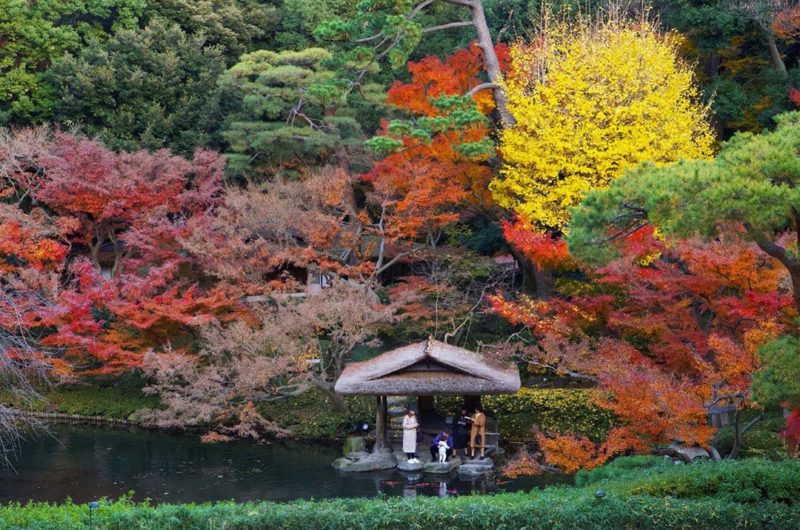
“HAPPO-EN (八芳園)” was the residence of a vassal, who served the founder of Japan’s last shogunate, in the 1600s and the cousin of Eiichi Shibusawa, who will be depicted on the new 10,000 yen bill, in the late 1800s. In 1915, it was bought by Fusanosuke Kuhara, who opened the Hitachi Mine, and maintained as a garden. The Koi fish pond was made at the place that used to be a river, and various historical buildings and relics surround here: the ancient Korean Buddhist pagoda with a history of more than 1,000 years, over 500-year-old pine tree, the tea room ‘MUAN (夢庵)’ built in the late 1800s, etc. This garden has as many as 151 maple trees, which produce a picturesque view looking as if they’re burning red in the best season. As the name of ‘HAPPO-EN’ meaning that all directions are beautiful, it’s breathtakingly beautiful no matter where you see here. Why not enjoy the view while having a relaxing time at ‘Thrush cafe’ with terrace seats or a Japanese restaurant ‘ENJYU’?
| Opening Hours | 10:00AM – 9:00PM *Please opening hours of each eateries on the official website. |
| Address | 1-1-1 Shirokanedai, Minato-ku, Tokyo Prefecture |
| Access | It takes 10 minutes from Shinagawa Station by shuttle bus. Hotel Gracery Tamachi: 2 station away from Tamachi Station on the Yamanote line Hotel Tavinos Hamamatsucho: 3 station away from Tamachi Station on the Yamanote line |
| URL | https://www.happo-en.com/banquet/about/ |
“Institute for Nature Study” allowing visitors to see autumn scenery created by 1,000 types of trees
Reference from 惹かれるもの “-819- 池に映した紅葉“
“Institute for Nature Study” is a 200,000㎡ vast garden where 1,000 types of plants, over 2,000 types of insects and more than 100 types of birds live. It was a Samurai’s suburban residence in the 1600s, a spot with powder magazine of the army and navy between the late 1800s and early 1900s and a land of the Imperial family from 1912 to 1926. In other words, its role has been changing with the times. Since ordinary people couldn’t enter here, abundant nature remains. Now, it’s designated as a natural monument and historic site. As it becomes more and more like autumn, a great variety of trees change into different colors such as red, yellow and orange. Each type of trees is separately planted, so let’s find your favorite autumn scenery while taking a walk here! Besides, there are some ponds and rivers. Especially, ‘inverted maple’ reflected on the water surface of the pond is must-see.
| Opening Hours | 1st September to 30th April 9:00AM – 4:30PM/1st May to 31st August 9:00AM – 5:00PM Closed on Monday, the day after a public holiday and New Year’s Holidays (28th December to 4th January) *When Monday is a public holiday, it’s closed on Tuesday. *When the day after a public holiday is Saturday or Sunday, it opens. *Please check the official website because the opening date may change. |
| Address | 5-21-5 Shirokanedai, Minato-ku, Tokyo Prefecture |
| Access | A 9-minute walk from Meguro Station Hotel Gracery Tamachi: 5 station away from Tamachi Station on the Yamanote line Hotel Tavinos Hamamatsucho: 6 station away from Tamachi Station on the Yamanote line |
| URL | http://www.ins.kahaku.go.jp/english/index.php |
Base of this trip
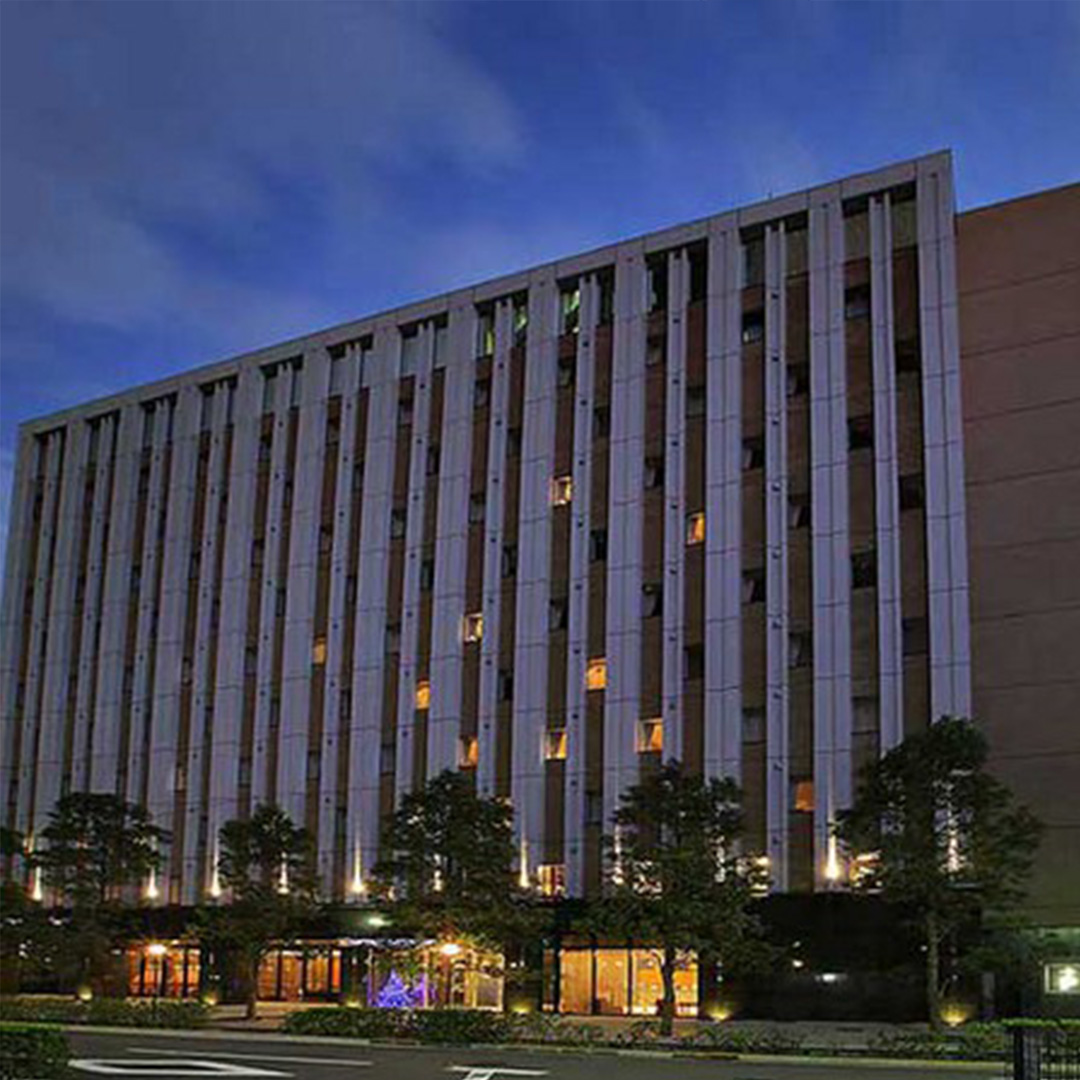
Hotel Gracery Tamachi
4-min walk from Tamachi station / 7-min walk from Mita station
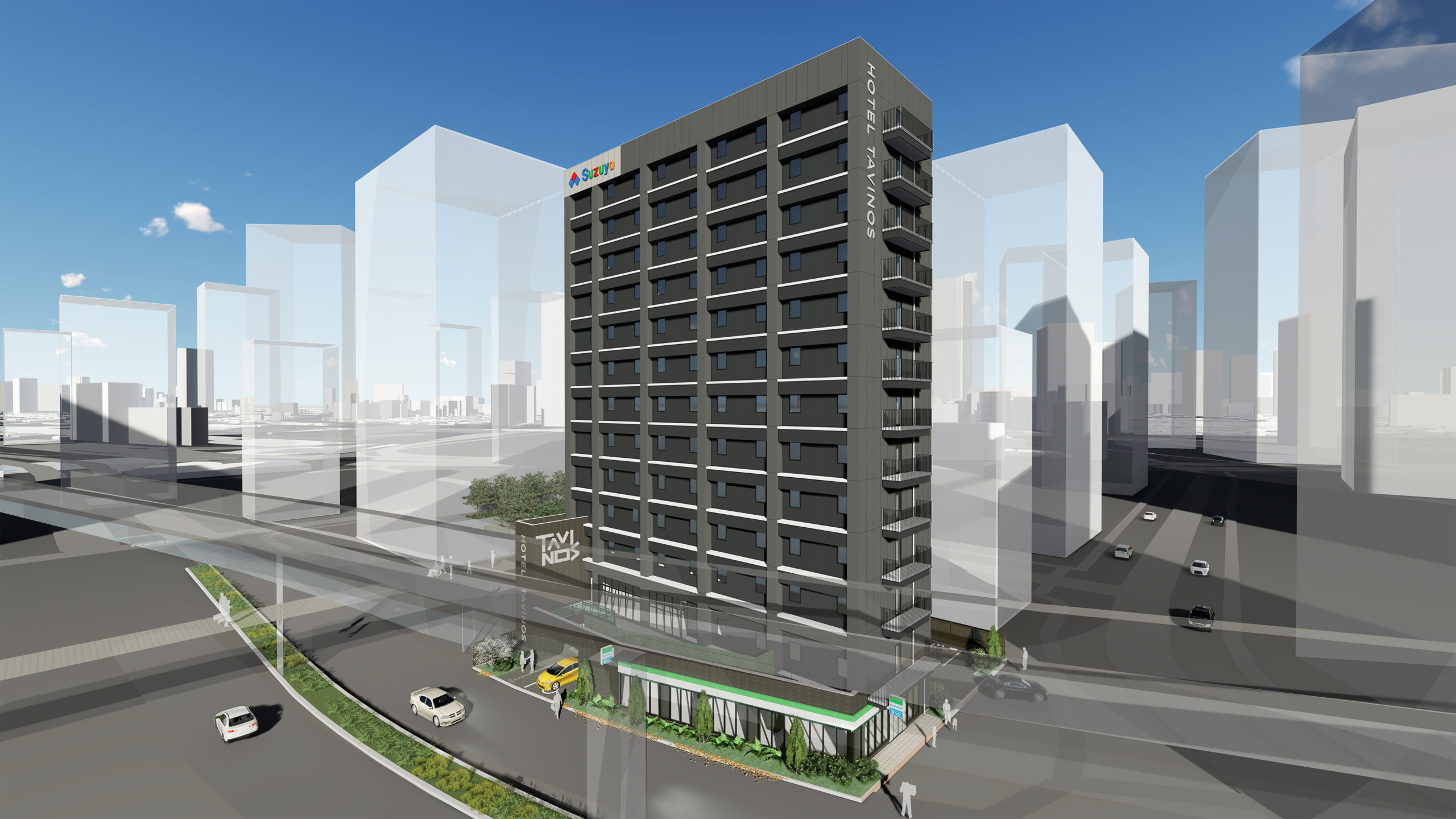
Hotel Tavinos Hamamatsucho
2-min walk from Takeshiba station on the Yurikamome Monorail / 8-min walk from JR Hamamatsucho station and Daimon station on the Toei Oedo line
